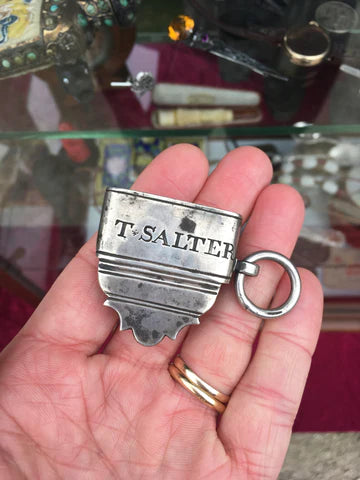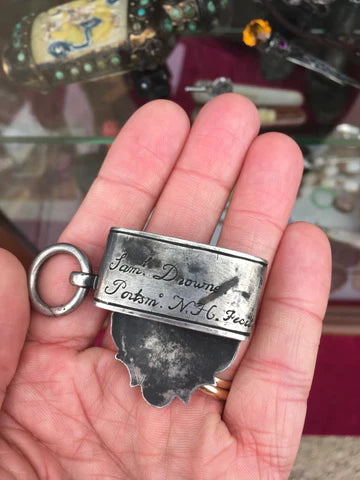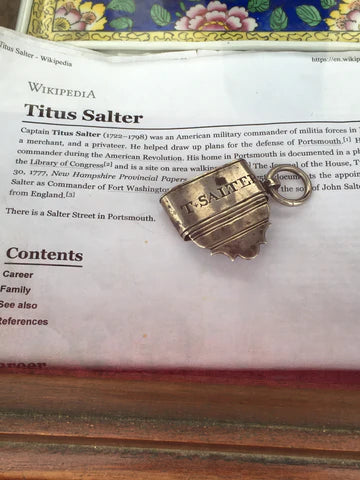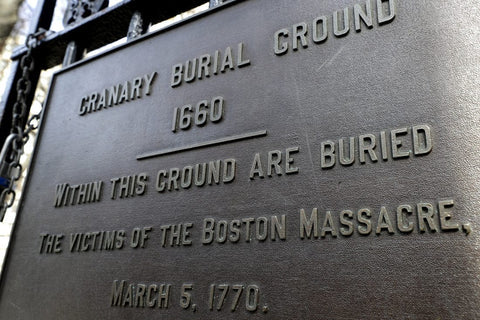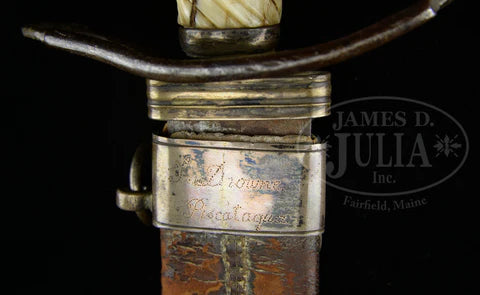A Very Rare 18th Century Silver Relic With A Possible Link To The Boston Massacre On March 5th 1770 Marking The Beginning Of The American Revolution
FREE UK & WORLDWIDE SHIPPING ON ALL ORDERS
A Very Rare 18th Century Silver Relic With A Possible Link To The Boston Massacre On March 5th 1770, Which Is Considered By Many Historians As Marking The Beginning Of The American Revolution.
You’ll see the name, ’T. Salter’, which refers to a Captain Titus Salter who was an American military commander during the American Revolution and helped draw up the defence of Portsmouth. In fact, his home in Portsmouth is documented in a photograph held by the Library of Congress and is now a site of area walking tours.
It is also engraved with the name 'Sam Drowne', along with the wording 'Portsm. N.H. Fecit. 'Samuel Drowne' is a well known American silversmiths of the 18th century based in Portsmouth, New Hampshire.
Like many other American silversmiths of the time, Drowne was an ardent supporter of the patriot cause and was apparently concerned in an affair which is considered by many historians as marking the beginning of the Revolution, the 'Boston Massacre’.
Amid tense relations between the civilians and the soldiers on 5th March 1770, a mob formed around a British sentry and verbally abused him. He was eventually supported by seven additional soldiers, led by Captain Thomas Preston, who were hit by clubs, stones, and snowballs. Eventually, one soldier fired, prompting the others to fire without an order by Preston. The gunfire instantly killed three people and wounded eight others, two of whom later died of their wounds.
On March 12, 1770, Boston residents held a town meeting, during which a committee was appointed to produce an account of what happened on the 5th March 1770 to send to officials in London. 'Samuel Drowne' was one of 96 residents of Boston to give sworn testimony to justices of the peace about what happened between the British soldiers and residents of Boston. These accounts were taken by ship to London on 1st April 1770.
Eight soldiers, one officer, and four civilians were subsequently arrested and charged with murder, and they were defended by future U.S. President John Adams. Six of the soldiers were acquitted; the other two were convicted of manslaughter and given reduced sentences. The two found guilty of manslaughter were sentenced to branding on their hand.
The Massacre was a signal event leading to the Revolutionary War. It led directly to the Royal Governor evacuating the occupying army from the town of Boston. It would soon bring the revolution to armed rebellion throughout the colonies.






